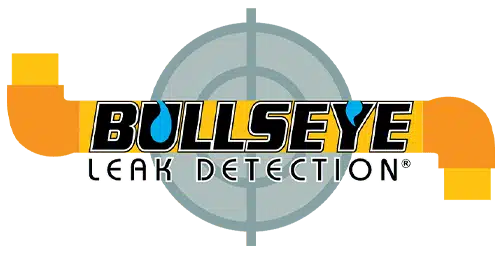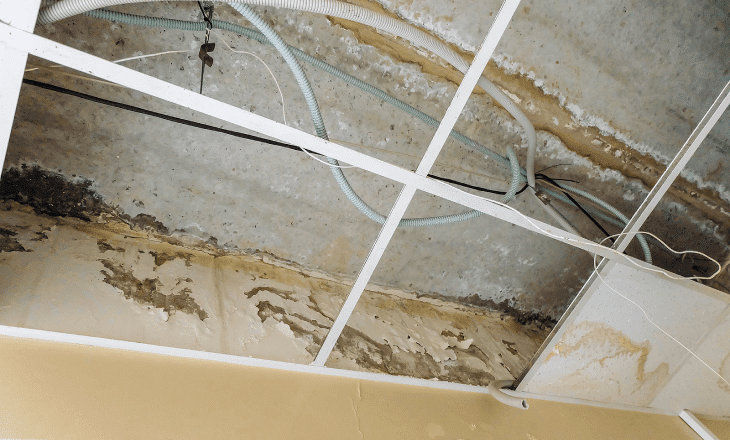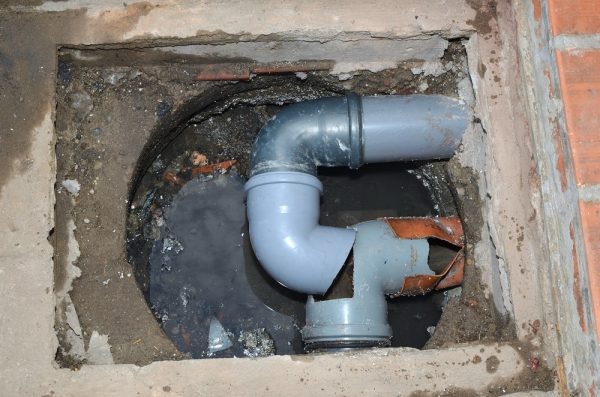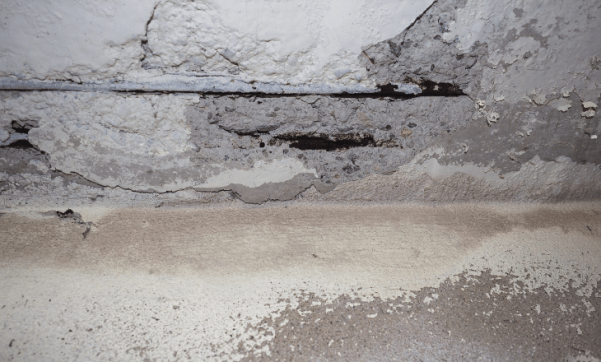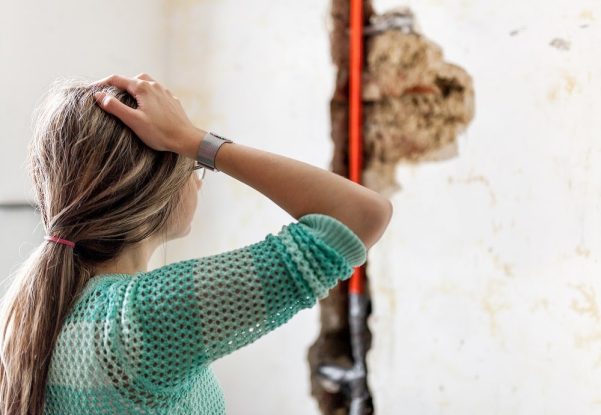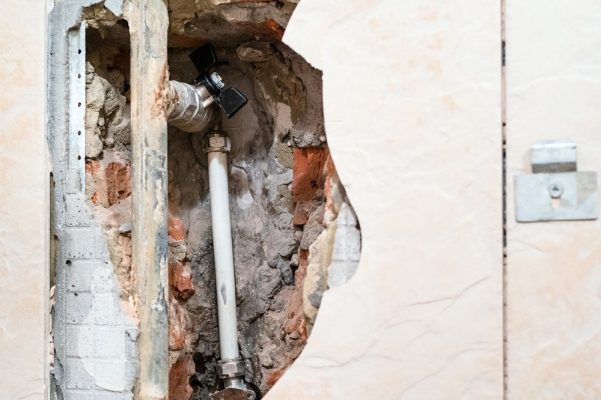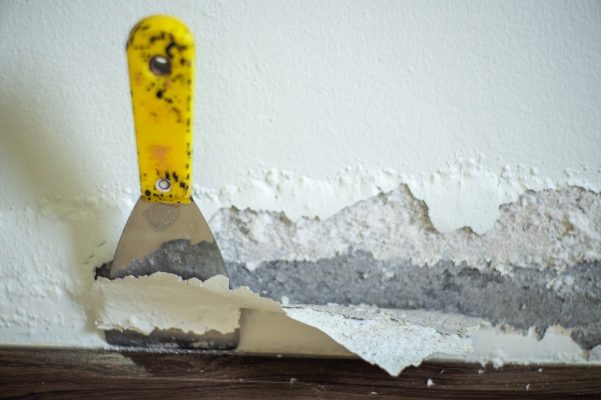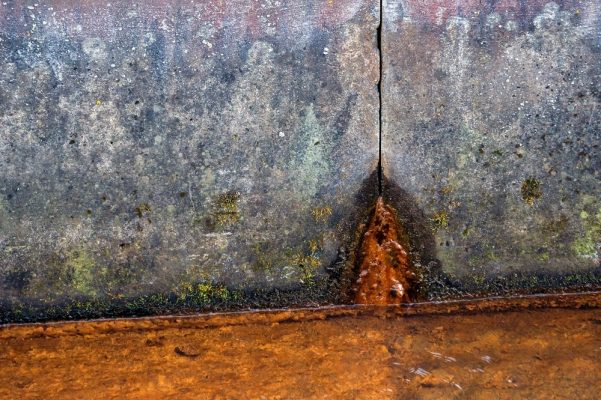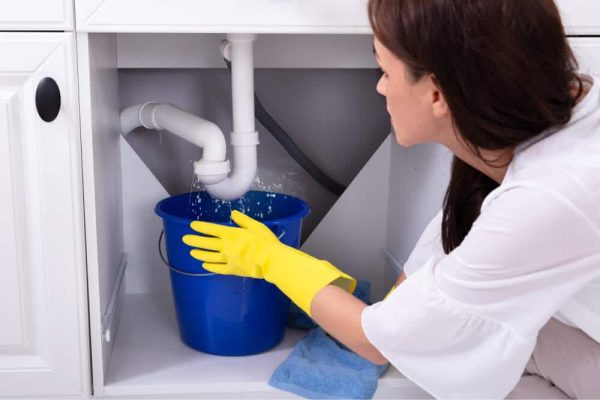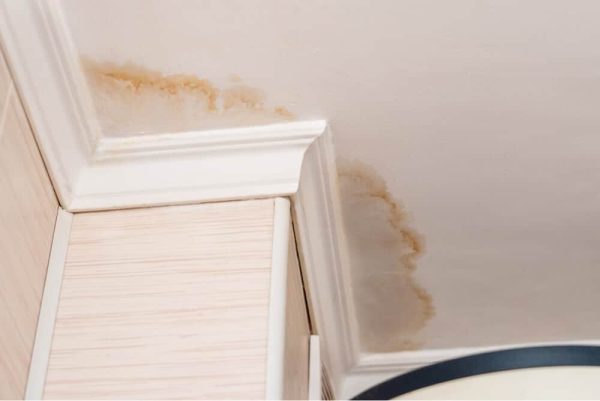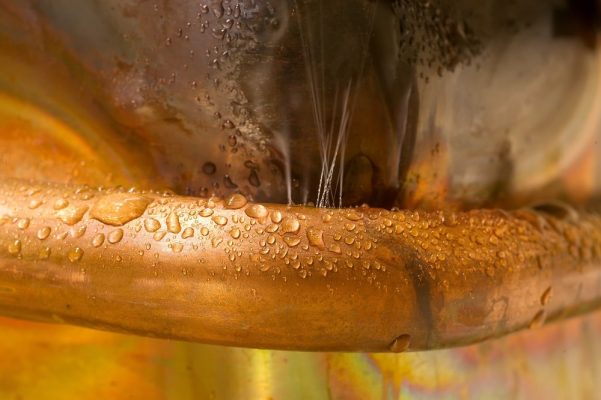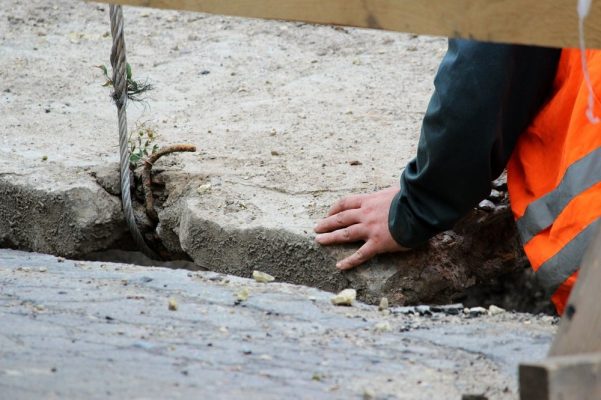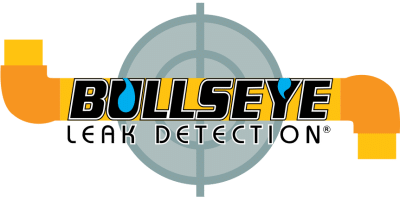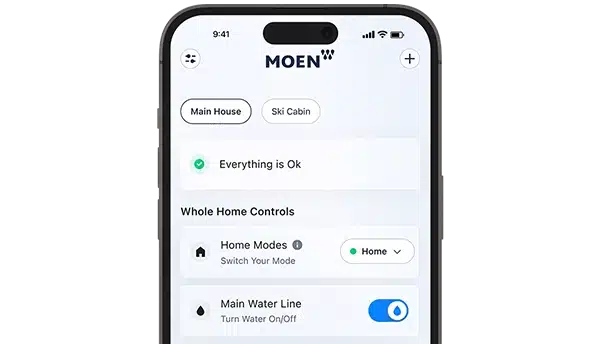Some leaks in your home are easy to spot. A dripping faucet, a leak around your toilet base, or a leaky dishwasher become apparent quickly. But many leaks can develop in unseen areas of your home—in the walls, the basement, or even under the concrete slab of your home. This last type of leak is known as a slab leak, and it cannot be easy to detect and repair. Keep reading to learn more about the signs of a slab leak and how to find slab leak repair in Sacramento.
How to Prevent Pipe Bursts and Slab Leaks When Temperatures Get Low
Colder temperatures frequently bring about plumbing problems for homeowners. Even here in California, where the weather is typically mild, cold snaps can occur that drop the temperatures well below freezing. When this happens, your pipes are in danger of freezing and bursting, leaving you with a mess to clean up and some major repair bills. How can you help prevent this from happening? Please keep reading to get tips from our plumbing contractor in Sacramento.
Insulate Your Pipes
If you have any exposed pipes around your home, ensure they’re properly insulated. Of course, you can do very little to insulate the pipes inside your walls. Still, the good news is that those are far less likely to freeze since they’re sealed between layers of drywall and construction insulation and receive some of the benefits of your home’s heated air. Exposed pipes—especially those on the exterior of your home—don’t have those benefits.
Take a walk around the perimeter of your home to look for any exposed pipes that might benefit from a layer of insulation, and consider insulating the exposed pipes under your sinks as well. A simple layer of insulating foam will typically do the trick, but other options include special heated tape and other insulation methods.
Open Your Cabinets
Speaking of those pipes under your sink, you can further protect them by keeping those cabinets open any time below-freezing temperatures are expected. While you might think your home’s heating protects them, the closed cabinet doors can seal them off from that heated air much more than you might realize. This is especially true for sinks up against an exterior wall; the pipes running through the wall will make all the pipes under the sink more vulnerable to freezing. Opening up those cabinets helps to circulate warmer air around the pipes so that they don’t freeze during a cold snap. It’s a small task to open up your cabinet doors, but it can make a big difference in protecting your pipes.
Don’t Drop Your Thermostat Too Much
While you might be tempted to turn down your thermostat a few degrees during a cold snap to help save on utility bills, it’s not recommended. Dropping the temperature in your home, even if it’s just at night, makes your pipes more susceptible to freezing. It’s better to keep your home at a consistent temperature day and night until the cold snap is over. It might cost you a little bit more on your utility bills, but it’ll save you a lot of money on expensive repairs. Also, be sure to read your insurance policy. Often, policies state that if you haven’t maintained a temperature of at least 55 degrees Fahrenheit in your home, you may not be covered in the case of a frozen, burst pipe.
Insulate More of Your Home
The parts of your home that you live in are insulated relatively well. However, most homes have spaces like basements, crawlspaces, attics, and garages that don’t have nearly the same level of insulation. Pipes in these areas are much more likely to freeze in a cold snap. Adding insulation in these spaces will help protect the pipes while also improving your home’s overall energy efficiency throughout the year, which is a bonus.
Repair Any Existing Leaks
If you have any existing leaks in your plumbing, you should have those leaks repaired before another cold snap hits. While a pinprick leak may not seem like a big deal, that steady drip of water makes the damaged pipe much more susceptible to freezing. All it takes is one hard freeze, and that little leak can cause the pipe to freeze and ultimately burst, flooding your home and causing severe water damage.
Not all plumbing leaks are easy to detect. They might be hidden inside walls, in rarely-used parts of your home like crawlspaces, or otherwise hidden from view. It’s essential to pay attention to your home and recognize the signs of a hidden leak, which include high levels of humidity in a particular area of the home, a musty smell mainly confined to one room, and unexplained increases in your water bill. You might already have a hidden leak if you notice any of these signs. Getting it repaired now can help you prevent it from becoming a significant problem during the next hard freeze.
What Causes a Slab Leak?
There are three common causes of slab leaks:
Excess pressure: Too much pressure in the underground pipes of your home can cause them to crack and leak. This is most common in areas with clay-heavy soil, which expands and shrinks more dramatically than other soils; this can cause more shifting under the foundation, putting more pressure on the slab and pipes. An earthquake can also cause shifting and excess pressure.
Corrosion: Some soils have higher metal content than others. Very metallic dirt in your area can cause faster decay in your underground pipes, leading to cracks, holes, and leaks.
Abrasion: If your pipes are next to a hard surface, such as rocks or even your slab itself, they can rub against that surface until they wear away and leak. Sometimes, when water runs through your pipes, they vibrate slightly; this is enough movement to cause abrasion and wear them down over time.
While none of these issues are within your control, the best thing you can do is to recognize the signs of a slab leak and get help quickly.
What Are the Signs?
The signs of a slab leak can be challenging to detect. And, often, you might mistake the symptoms for a different problem. However, if you notice any of the following issues in your home, it’s worth having those underground pipes checked out:
Very high water usage
If your water bill has increased dramatically, you probably leak somewhere. Try shutting off all water-using devices and check your water meter. If it’s still spinning, get your pipes checked.
Puddles
Where there’s a puddle, there’s a problem. If there hasn’t been rain for a while, but you’re finding puddles with no apparent source (such as leaky hose bib), something is amiss with the pipes underground.
Hot floor
Heated floors are great—but only if you’ve chosen to install them. If you’re noticing hot spots under your floors, there’s probably a leak in hot water lines.
Mold
Have you found mold under your carpets or other floorings? There’s a good chance that the moisture feeding the mold growth is seeping through the slab.
Sound of water running
If there’s no water running in your house, but you can hear water running anyways, something is wrong.
Cracking
Have you noticed cracks in your slab, walls, or flooring? This could be a result of water damage from a slab leak.
While these issues can often arise from other problems, if you’re experiencing more than one, you should have your slab and pipes checked.
How to Detect a Slab Leak
Because the signs can be ambiguous, you must have a slab leak confirmed by a professional. A leak detection expert can use sonic equipment to determine if there is, in fact, an underground leak; don’t let anyone rip up your foundation until you’re confident that there is a leak and an expert has pinpointed the exact location of the leak.
If you need slab leak detection or slab repair in Sacramento, contact Bullseye Leak Detection today for expert help.
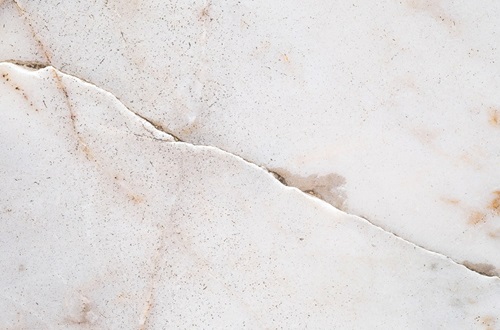
Slab Leaks: Everything a Homeowner Should Know
You count on your residential plumbing to provide a life-nourishing resource to your home each day. Most of the time, your plumbing simply fulfills its purpose, performing its duty for decades with little maintenance or attention. However, when it does reach its point of failure, the results can be costly, messy, and disruptive to your everyday life.
When pipes burst or leak in walls or between the home and street, they can easily be repaired. But when leaks go undetected in your home’s slab, they can drive up utility bills, do significant damage to your foundation, and wreak havoc on the structure of your home. That’s why it’s important to be vigilant when it comes to slab leak detection in Sacramento. Finding the leak is often a bigger challenge than repairing it. Whether you use your own knowledge to locate the leak or hire a detection service, the best slab leak detection in Sacramento is early slab leak detection. Read on to learn a few important things to know about slab leaks and their consequences if left unattended.
What is a Slab Leak?
A slab leak is a leak that appears in the concrete foundation, or slab, beneath any home that is not built upon piers. When homes on slabs are constructed, a copper water pipe is embedded in the concrete to connect the home to municipal water supplies. Likewise, PVC pipes are encased in the slab to allow for sewage discharge from the home into the sanitary sewer lines. Slab leaks occur when either of these water-bearing plumbing access points fails below, in, or just above the surface of the slab.
Causes of Slab Leaks
Slab leaks can be caused by many different catalysts. They can result from faulty installation. If the pipes are dented when they’re installed, the dent can provide a weak point for future leaks. If pipes are not firmly embedded in the slab, they can vibrate and rub against the concrete until a hole is ground into the pipe. Ground Movement can cause slab leaks as well. Shaking of the earth from natural or manmade causes can lead to pipe abrasion or torsion that can lead to cracking. Prolonged freezing temperatures can also be a culprit in slab leaks. When the water in pipes freezes and expands, it can crack a copper pipe. Corrosion is another common cause of slab leaks.
How Hard is it to Find Them?
Finding a slab leak can be simple, or it can be exceedingly difficult. If the leak is on the supply side, meaning it occurs in pipes that bring water into the house, they are easier to locate. First, unseen slab leaks can be detected by a careful review of your monthly water bill. If you see an uncharacteristic spike in water usage, you may have a leak. A sudden noticeable and prolonged loss of water pressure in the home could also be an indicator of a leak. Water coming into the house is under pressure, and therefore the leaks often involve high volumes of water. Leaks in the slab may be manifested as wet spots on flooring or puddles. Some substantial leaks can even be heard or felt through vibrations in the slab at the leak point. Sewage leaks in the slab can be far more difficult to locate. Small amounts may trickle from the leak, and no water spots or puddles are ever generated.
Consequences of Undetected Slab Leaks
It’s important to locate slab leaks as soon as possible because they can result in significant primary and secondary damage to your home. Water damage is an obvious issue, as a wet slab can result in wet drywall that will eventually have to be replaced. Slab leaks can also subvert your foundation by washing away the soil underneath it. This can destabilize your home and require expensive remediation. Secondary damage to your home resulting from slab leaks can include the introduction of dangerous mold, mildew development, and biohazard contamination from leaking sewer pipes. It can also result in higher utility bills, as an unregulated slab leak on the supply side can add hundreds of dollars to your monthly water bill.
Basics of Slab Leak Explained
Most homeowners experience some type of plumbing leak at some point, and while some of these leaks can cause minor damage, leaks that go undetected can become a major problem quickly. Slab leaks are one type of plumbing leak that can become a big deal because they can compromise the structural integrity of your home and be difficult for homeowners to locate. It’s important to recognize the signs of a slab leak so that you can get professional slab leak detection in Sacramento as soon as possible. Here’s what you need to know about slab leaks.
What’s a Slab Leak?
A slab leak is a leak in the pipes that are below the concrete foundation of the home. The leak can occur on either the pressure side of the drain or the drainage side. Leaks on the pressure side can cause a lot more damage than those on the drainage side, but either type can be detrimental because they can compromise the integrity of the foundation. Unfortunately, many homeowners are unaware of the signs of a slab leak because they’re not aware of what signs to watch for, or the leak is slow enough that the indicators are difficult to identify.
What Causes It?
Slab leaks can be caused by many different things. The plumbing materials can sometimes be damaged during the installation process or be incorrectly installed, which makes leaks more likely when the home construction is complete. Shifting soil around the foundation is another common cause of slab leaks. When the soil expands and contracts, the foundation settles, which is normal. The pipes are designed to withstand normal settling; however, when the pressure from settling becomes excessive, the pipes can break. The pipes also expand and contract as water flows through them, but if the pipes were placed in contact with gravel, concrete, other pipes, or other abrasive materials, they either won’t have enough room to expand, or they’ll wear down from abrasion. Corrosion is another cause of leaks in homes with copper plumbing pipes.
What Are the Signs?
There are many signs to consider if you suspect you might have a slab leak. If the water has been leaking long enough to go under the concrete, you may notice pools of water around the exterior of the home. Damp carpet or warped wood floors, as well as the smell of mold or mildew, could indicate a slab leak as well. You might also notice that the floors seem warmer than usual or that some areas have a warmer floor than others. The water pressure will often go down as well, and in many cases, you might also notice that the water usage has gone up with no explanation. One of the most obvious signs of a leak on the pressure side is the sound of rushing water or other unusual noises even when the water isn’t running.
How Are They Located and Repaired?
Slab leaks are extremely difficult for homeowners to locate and repair alone, so it’s important to get professional slab leak repair. The first step in slab repair in Sacramento, CA, is to positively identify the leak so that it can be repaired. Technicians use ultrasonic listening devices and mapping with digital radio detection to locate the leak. It may be repaired using pipe relining depending on the severity of the problem. Other cases may require the slab to be accessed to replace portions of the plumbing system. If you suspect you have a slab leak, contact Bullseye Leak Detection, Inc. today.
The Hidden Dangers of Slab Leaks and How to Detect Them
As a homeowner, there are many potential issues that can arise within your property. One such issue that often goes undetected until it’s too late is a slab leak. Slab leaks occur when there is a break or leak in the water pipes beneath the concrete foundation of your home. These leaks can lead to a myriad of problems, ranging from structural damage to mold growth. Why are slab leaks so dangerous, and how can you detect them—and stop them—more quickly to avoid those dangers? Keep reading to learn more about slab repair in Sacramento.
Understanding the Causes of Slab Leaks
Slab leaks can occur for several reasons. One common cause is the aging of pipes. Over time, the pipes beneath your home can deteriorate and develop cracks or holes. Another cause is poor installation or construction practices. If the pipes were not properly installed or if substandard materials were used, it could lead to leaks in the future. Additionally, shifting soil or seismic activity can cause the pipes to shift or break, resulting in slab leaks.
The Hidden Dangers of Slab Leaks
One of the most significant dangers associated with slab leaks is the potential for structural damage. When water leaks beneath the foundation of your home, it can weaken the soil and compromise the integrity of the concrete slab. Over time, this can lead to foundation settling, cracks in the walls or floors, and even sinkholes. If left untreated, the structural damage caused by slab leaks can be extensive and costly to repair.
Another hidden danger of slab leaks is the growth of mold and mildew. When water accumulates beneath the foundation, it creates a damp environment that is ideal for mold and mildew to thrive. Mold spores can spread through the air and can have serious health implications, particularly for individuals with respiratory conditions or weakened immune systems. The presence of mold and mildew in your home can lead to allergies, asthma attacks, and other respiratory issues.
How to Detect a Slab Leak
So, if the leak is beneath your concrete foundation, how can you detect it sooner and get it repaired before those hidden dangers occur? While you won’t hear dripping in your walls or see obvious wet spots in your paint job, there are a few signs of slab leaks that you can keep an eye out for:
- Increased water bills – A sudden increase in your water bills without any apparent explanation can be a sign of a slab leak. When water leaks beneath your home, it can result in a significant amount of wasted water. If you notice a spike in your water bills and cannot identify any other potential causes, it is advisable to investigate the possibility of a slab leak.
- Warped flooring – If you notice warped spots on your floors, it could be an indication of a slab leak. When water pipes develop a leak beneath the flooring, the water can pool beneath the flooring panels and cause the flooring to warp. This is a clear sign that there is a problem with your plumbing system and that immediate attention is needed.
- Running water sounds – While not as easy to detect as a dripping faucet, those with keen ears may hear a slab leak. If you hear the sound of running water even when all faucets and fixtures are turned off, it is a strong indication that you may have a slab leak. The sound of water running through the pipes beneath your home can be a telltale sign that there is a leak somewhere in the system. If you hear this sound persistently, it is essential to have a professional plumber inspect your property to locate and repair the leak.
Get a Slab Leak Repair Right Away
Slab leaks can pose serious risks to your home and health if left undetected and unresolved. The increased water bills, warm spots on floors, and running water sounds are all signs that indicate the presence of a slab leak. If left unattended, these leaks can cause serious structural damage and promote mold and mildew growth inside your home’s structure. If you suspect that your home may be experiencing a slab leak, it is crucial to contact a professional plumbing service immediately.
What to Do If You Suspect You Have a Slab Leak at Your Home
A leaky faucet is easy to spot; a slab leak is a lot trickier to catch. These leaks are buried beneath your home’s concrete slab foundation, so you won’t hear it dripping at night or see the water leaking yourself. Still, there are plenty of signs that you need slab repair in Sacramento, and if you suspect you have a slab leak, it’s recommended that you contact a professional right away. Keep reading to learn the early signs of a slab leak and what you should do about it if you suspect you have one in your home.
What to Do About It
Now that you know how to detect a slab leak, what should you do if you suspect you have one? As already mentioned, definitely contact a professional. In addition, you should consider using the emergency shut-off valve for your home’s water supply to minimize any water damage occurring underneath the slab.
How to Handle Slab Leaks in Your Home
A leak in an exposed pipe generally isn’t a major issue to fix. In fact, with the right tools and how-to videos, you might even be able to do it on your own. But what about when that pipe is hidden under the concrete slab of your home? The location of a leak can completely change the game, immediately making the situation much more difficult to deal with. How are leaks that are quite literally buried under concrete supposed to be repaired? Keep reading to learn more about dealing with slab leaks and slab repair in Sacramento.
How to Sub-Slab Pipes Leak Anyways?
If a pipe is buried underground, what causes it to start leaking to begin with? Most often, these leaks are caused by corrosion. While plumbing pipes are designed to last for decades, they are all subject to eventual corrosion, so this is most commonly seen in older homes. As pipes corrode, they can develop weak spots that eventually crack and break, leading to leaks.
Another possible cause of a slab leak is abrasion. When water rushes through your underground pipes, they vibrate slightly; if the pipe is too close to a rock or other hard material, this can cause the pipe to constantly rub against the harder material until it creates a weak point in the pipe that cracks and leaks.
How are Slab Leaks Repaired?
Once you know you have a slab leak, how does it get repaired when it’s buried under concrete? Truth be told, it’s not exactly an easy process. The first step is finding the exact location of the leak; we want to ensure we know the leak’s location with as much accuracy as possible to minimize the amount of demolition required to access the leak and repair it. We do this through advanced leak detection equipment like moisture detectors, audio equipment that can hear the sounds of leaking underground, and more.
Once we know the exact location of the leak, we’ll break up the concrete directly over the impacted area and dig up the soil to expose the pipe. Depending on the extent of damage to the pipe, we might repair only the small section or replace a large segment of the pipe; in cases of extreme corrosion and old pipes, we may recommend replacing the water main altogether. Once the pipe is repaired or replaced, we’ll perform a series of tests to ensure all issues have been addressed and you have no further leaks. Only then will we rebury the pipe and pour new concrete to get your home back to normal.
If you suspect you have a slab leak, contact Bullseye Leak Detection to work with a plumbing contractor in Sacramento who specializes in finding and repairing these kinds of leaks. Call now to schedule an appointment!
What to Expect from Slab Leak Repair
Most residential leaks make themselves known through a set of readily observable symptoms such as puddles on the floor, wet spots on the wall, or the sound of running water in the crawlspace. However, if your home is on a slab, finding a leak beneath or within your home’s concrete foundation can be far more difficult. In some cases, you may have all the evidence of a leak and still not be able to see any superficial indications that water is flowing freely in your slab.
However, if you do believe you’re experiencing a slab leak, it’s important that you take immediate action by hiring a company specializing in slab leak repair in Sacramento immediately. Many slab leak repair services can not only make repairs for you, but also use specialized equipment to find leaks that have evaded observation. Keep reading to learn what to expect after experiencing a slab leak.
Causes
Slab leaks can be caused by several potential factors. However, most of them are related to one of three key factors. Those factors are abrasion, corrosion, and too much pressure. Abrasion can happen when the pipes vibrate because of excess pressure, improper installation, or seismic activity. Overtime, the friction of the concrete against the plumbing can wear the plumbing thin, at which time a leak can rupture. Corrosion is simply rust, as plumbing components often sweat during temperature changes, which can cause them to oxidize. Excess pressure is the enemy of plumping pipes, as they are rated for maximum pressures that are sometimes exceeded by the water in the line.
Symptoms
If you’re lucky, there will be telltale signs of a slab leak that will help you diagnose the problem. Those symptoms include wet spots on the floor or under the carpet, puddles, mold growth beneath floor coverings, hot spots or cold spots on the floor, a spike in the water bill, cracks in the walls and foundation, and the sound of running water even when no faucets are activated. If you see these signs of a leak, contact a repair company immediately.
Detection
In some cases, there are no visible symptoms. Therefore, it’s up to the leak detection service to locate the leak using sensitive equipment that can diagnose leaks even within or beneath the slab. Your repair service may use acoustic detection methods that employ ground microphones to listen for the sound of running water. These devices can be used without disrupting the slab or destroying surrounding portions of your home.
Repair, Reroute, Repipe
Once a leak in the slab is discovered, the homeowner has a few choices regarding how to proceed. The three primary options for remediating a slab leak are to repair the leak if it can be accessed, rerouting the plumbing around the leak, or repiping the entire home. If the leak can be accessed easily, your repair service may be able to get to it and perform a repair without damaging the foundation of your home. Also, new technology that deploys an epoxy pipe lining may be an option, as it creates a new inner wall in the pipe that will seal over the leak. If the damage is extensive or the leak is too deep in the slab, rerouting may be the best bet. That involves shutting off the damaged pipe altogether and running pipe around it to install a new segment of plumbing. Finally, if the situation is dire, you may have no choice but to repipe the house, which involves replacing all pipe and starting over anew.
Cost
The cost depends on which repair option best fits your needs. While some plumbers include leak detection in the cost of the repair, if the charge is separate, you can expect to pay from $100 to $400 to find your leak. A simple repair can run as little as $500, but more extensive repairs could cost up to $4000. Rerouting can vary in cost from $2000 to $4000. However, repiping an entire house could cost as much as $15,000 depending on the size of the home and other factors.
Is the Slab Leak in My Home Covered by My Insurance Policy?
Major home repairs are always a nuisance, no matter who’s paying for those repairs. However, having repair costs covered by homeowner’s insurance can lift a major financial burden off of your shoulders. If you’ve developed a slab leak and need water main repair in Sacramento, you might wonder if your homeowner’s insurance policy will cover this type of repair. Keep reading to learn what you need to know about insurance and slab leaks.
Always Talk to Your Agent
First and foremost, it’s important to remember that there are no cut-and-dry rules about homeowner’s insurance coverage. That coverage can vary widely based on your carrier, policy, and even where you live. If you’re ever in doubt about what your homeowner’s insurance will cover, you should reach out to your insurance agent to go over the details of your coverage. They will be best equipped to tell you exactly what is and is not covered. However, the rest of this article will outline general guidelines and coverage that apply to most homeowner’s insurance policies. This can help you to establish some basic understanding of what is likely to be covered, but you should refer to your insurance policy for exact coverage information.
Types of Hidden Leaks
There are several different types of hidden leaks; not all are slab leaks, and homeowner’s insurance will not cover all types of hidden leaks. A slab leak specifically refers to a leak that develops in the water pipes beneath your home’s concrete foundation (the slab). A main line leak usually doesn’t do much damage to the house, as it usually leaks into the landscaping. A leak under the slab on the hot or cold lines usually don’t do much damage either, since they generally seeps down into the soil, not up through the slab. There are many water supply lines that run around your property, but one of the biggest concerns are your pressurized water lines. These are the most important to check regularly because they are under pressure constantly (even when your faucets or fixtures are not running) and, therefore, can cause a lot more damage inside your home, quickly.
Slow leaks in your walls and structural leaks are considered separate issues. Additionally, though they run under your slab, sewer line leaks are not technically considered slab leaks; they are in a rather nasty category all their own.
Which Leaks Are Covered?
So, of the different types of hidden leaks described above, which ones are covered and which are not? Structural leaks and slow leaks inside your walls are generally not covered. These are considered part of your home’s wear and tear, which is not covered in a standard homeowner’s insurance policy. Sudden & accidental leaks are more commonly covered than long-term and wear & tear leaks. So much of this is circumstantial, though, that a leak detection in which cause and duration are determined is absolutely necessary in order for your insurance to consider covering. If you have a mold policy in place (which is not very common), then you may get a payout to cover any mold remediation associated with these leaks. However, leak detections are usually covered, regardless of the source, cause, or duration.
The pipes beneath your concrete slab are intended to last for decades (sometimes centuries), and unexpected breaks are usually included with most policies. This includes that worrisome water main line , sub-slab hot or cold lines, and pressurized lines we mentioned earlier.
Use a Certified Expert
In addition to speaking with your insurance agent, one of the best ways to ensure that your slab leaks are covered by insurance is to use a certified expert who is experienced with slab leak detection and water intrusion repair in Sacramento. At Bullseye Leak Detection, we specialize in these kinds of leaks and understand how to fill out the proper reports for your insurance carrier. Contact us today to schedule your service.
